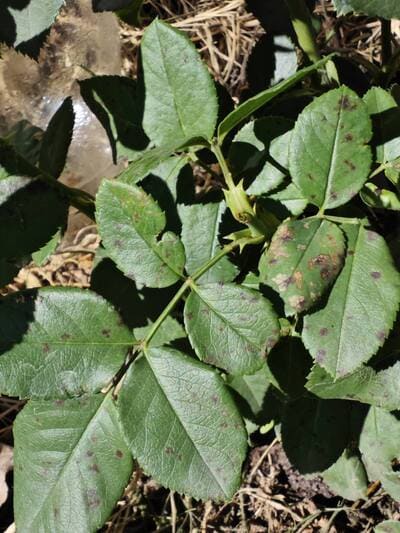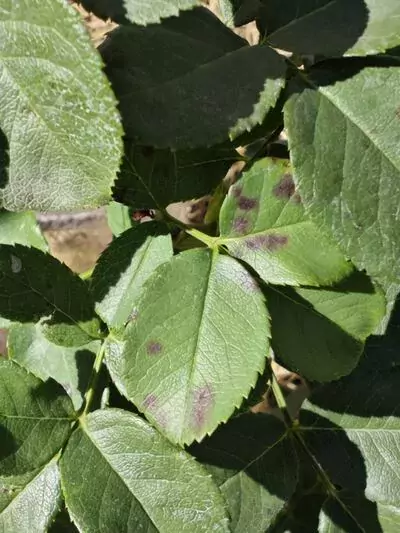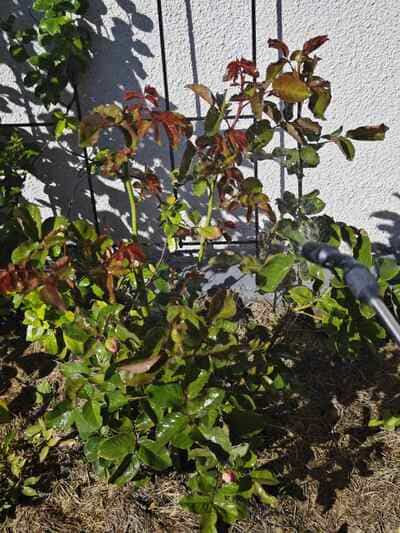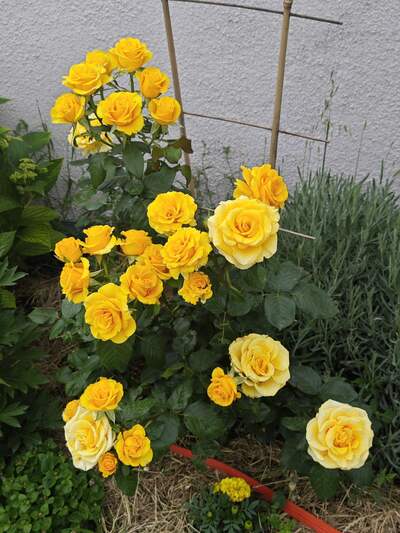Roses, often called the “queens of the garden,” bring beauty and elegance to any landscape. However, even royalty has its challenges, and for roses, one of the most common adversaries is the notorious black spot. Picture this: your flourishing rose bushes, with their vibrant colors and lush green foliage, suddenly marred by unsightly black spots. It’s like a garden horror story! But fear not, we’re here to unravel the mystery of those ominous black spots on rose leaves and provide you with effective solutions to restore your roses to their former glory.
What Are Black Spots on Rose Bush Leaves?
Before diving into solutions, let’s understand what we’re up against. Black spots on rose leaves are not a virus or bacteria but a fungal disease known as “rose black spot” (Diplocarpon rosae).
Recognizing this common ailment is essential to control and prevent further damage.


Rose black spots can quickly turn your picturesque rose bushes into a spotted disaster. The symptoms include:
- Black or dark purple spots: These irregularly shaped spots appear on the upper side of the leaves, ranging from pinhead size to about half an inch in diameter.
- Yellowing leaves: As the disease progresses, the areas around the black spots turn yellow, ultimately leading to leaf drop.
- Reduced blooming: Infected roses tend to produce fewer flowers, and the ones they do produce are often smaller and less vibrant.
What is the danger of black spots on roses?
The danger of black spots on roses lies in their potential to impact the health and appearance of your rose plants severely. Black spot is a fungal disease that primarily affects the leaves of roses, causing the following problems:
Defoliation: A black spot causes the infected leaves to turn yellow and drop prematurely. This defoliation weakens the plant, reducing its ability to photosynthesize and produce energy.
Reduced Flowering: When a rose loses its leaves due to a black spot, it also loses its ability to produce flowers. This can lead to a significant reduction in the quantity and quality of blooms.
Weakened Plants: Repeated and severe black spot infections can weaken rose plants over time. Weakened plants are more susceptible to other diseases and environmental stressors.
Spread to Other Roses: The black spot is highly contagious and can quickly spread to neighboring rose plants. This can turn a localized problem into a garden-wide epidemic.
Aesthetic Damage: A black spot creates unsightly black lesions on the leaves, diminishing the overall beauty of the rose bush and the garden.
Controlling black spots on roses involves a multi-pronged approach:
Non-Chemical Control:
- Pruning: Remove and destroy infected leaves and stems when you spot them. This prevents the spread of the disease.
- Spacing: Ensure adequate spacing between rose bushes to promote air circulation and reduce humidity, which favors black spot development.
- Watering: Water your roses at the base and avoid wetting the foliage. Morning watering allows the leaves to dry quickly.
Chemical Control:
If non-chemical methods aren’t sufficient, you may consider chemical treatments. Always follow the manufacturer’s instructions:
- Fungicides: Several fungicides are effective against black spot, such as sulfur-based or copper-based products. Apply these as a preventive measure or at the first signs of infection.
- Homemade Remedies: You can create your own DIY remedies like a vinegar spray or neem oil mixture to combat black spot naturally.

Home remedy recipes for black spots on roses
1. Milk and Water Spray:
Ingredients:
- 1 part milk
- 2 parts water
Mixing Instructions:
- Combine 1 part milk with 2 parts water in a spray bottle.
- Shake well to ensure thorough mixing.
Application:
- Apply this spray in the early morning or late afternoon to prevent leaf burn from the sun.
- Spray the mixture on the rose leaves’ tops and bottoms.
- Remove any diseased leaves or debris under the rose bush before applying.
- Apply once per week or every other week, ideally before the appearance of black spots or other fungal diseases like powdery mildew.
Note:
- This method is a preventive strategy rather than a cure for the existing black spot. It helps deter the spread of the disease.
2. Baking Soda Solution:
Ingredients:
- 1 heaping tablespoon of baking soda
- 1 gallon of water
- Optional: horticultural oil or soap (to enhance adherence)
Mixing Instructions:
- Add 1 heaping tablespoon of baking soda to 1 gallon of water.
- If you’d like, please add a small amount of horticultural oil or soap to help the mixture adhere better.
Application:
- Test the solution on a few leaves first to ensure no adverse reactions.
- Wait a few days to observe the results before proceeding with full-scale application.
- Spray the mixture on both sides of the rose leaves.
Note:
- Baking soda is alkaline, so avoid excessive use to prevent phytotoxicity (harm to plants).
3. Lime Sulfur Spray:
Ingredients:
- Lime sulfur (diluted according to the manufacturer’s recommendations)
- Water
Mixing Instructions:
- Dilute lime sulfur with water, following the manufacturer’s guidelines.
Application:
- Apply this spray during the winter when the rose plant is dormant.
- Spray it over the stems and trunk.
4. Milk and Baking Soda Combo:
Ingredients:
- Half a liter of milk
- Two tablespoons of baking soda
- Five liters of water
Mixing Instructions:
- Mix half a liter of milk with two tablespoons of baking soda in five liters of water.
Application:
- Spray this mixture liberally over the rose foliage and stems.
- You can apply this formula at any time of the year.
Note:
- Always test on a small area of leaves first and wait a few days to ensure no adverse reactions.
How to Prevent Black Spots on Roses:

Prevention is the best defense against black spots:
- Plant Resistant Varieties: Some rose varieties are less susceptible to black spots. Consult with your local nursery for recommendations.
- Regular Inspections: Routinely check your rose bushes for any signs of black spots, and take action promptly if you spot any.
- Proper Pruning: Prune your roses to improve air circulation and remove overcrowded growth.
- Cleanliness: Keep the area around your roses clean and free from fallen leaves and debris.
FAQs:
Are black spots on roses a problem in winter?
Black spot tends to be more active in warm, humid conditions. While it may not be as prevalent in winter, continuing preventive measures year-round is wise.
Is vinegar good for black spots on roses?
Yes, a diluted vinegar spray can help combat black spots naturally. Mix one part vinegar with three parts water and apply to the affected leaves.
Can black spots on roses be cured?
While it’s challenging to cure an established black spot infection completely, you can manage and prevent its spread effectively.
Can black spots on roses spread to other plants?
Yes, the spores can spread to other susceptible plants. Isolate infected roses and monitor nearby plants for symptoms.
How can I get rid of black spots on roses?
Pruning, proper watering, fungicides, and homemade remedies can help eradicate black spots.
How do you stop black spots on roses?
Regularly inspect your roses, remove infected leaves, and maintain good air circulation to prevent black spots.
Prevent Black Spots from Tarnishing the Beauty of Your Rose Garden. By gaining insights into the characteristics of black spots, proactively implementing preventive strategies, and applying proven treatments, you can ensure your roses thrive, radiating health and vitality while staying protected from this fungal adversary. With unwavering commitment and meticulous care, your roses will once again stand as the crowning jewels of your garden.
